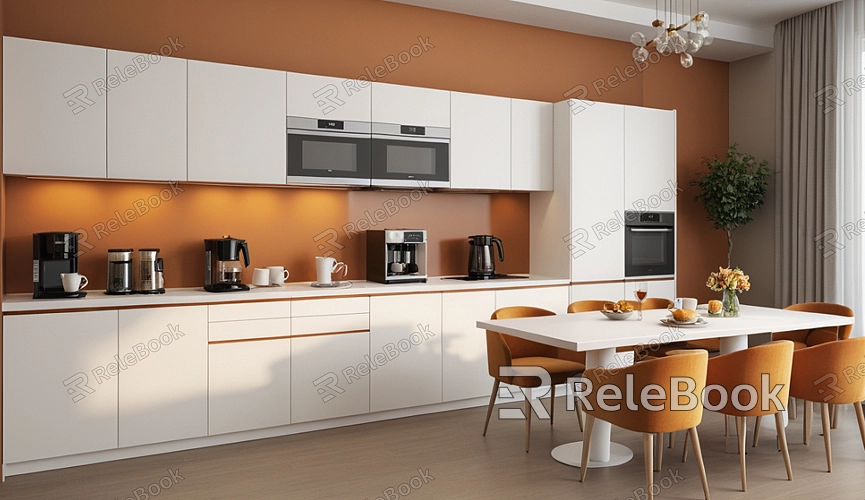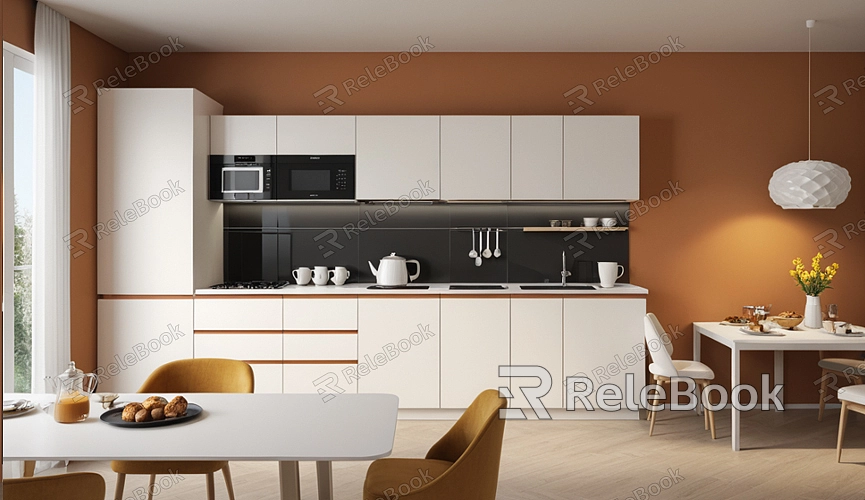How to Change the Color of a 3D Model in AutoCAD?
In modern engineering design and architecture, 3D modeling has become an indispensable tool. AutoCAD, as a widely used CAD software, offers powerful 3D modeling capabilities. During the design process, the use of color in 3D models not only helps designers better express their intentions but also enhances the visual impact of the model, making it easier to communicate and present ideas. However, many novice users may feel confused about how to change the color of a 3D model in AutoCAD. This article will provide a detailed guide on how to change the color of a 3D model in AutoCAD, covering the necessary steps and techniques.

Understanding AutoCAD's Color Properties
In AutoCAD, the color of a 3D model can be altered not only through simple color commands but also through layer properties, materials, and lighting effects. Understanding these color properties is key to effectively controlling the color of a 3D model. In AutoCAD, color properties mainly include "layer color" and "object color." Layer color refers to the color of the layer on which an object resides, affecting all objects on that layer. Object color refers to the color setting of an individual object, which can override the layer color.
Changing the Layer Color of a 3D Model
In AutoCAD, layers are essential tools for organizing and managing drawing objects. By setting the layer color, you can uniformly change the color of all objects on that layer.
1. Open the "Layer Properties Manager"
In the AutoCAD command line, type "LA" or access the "Layer Properties Manager" through the menu. Here, you can view all the layers that have been created along with their associated properties.
2. Select the Target Layer
Find the layer whose color you want to change in the layer list, and click on the color box for that layer. This will bring up the color selection dialog box.
3. Choose a New Color
In the color selection dialog box, you can choose from the standard colors provided by AutoCAD or use the "True Color" option to set a custom color. After selecting the color, click "OK," and the layer color will update immediately. All objects on this layer will automatically change to the new color you selected.

Changing the Color of an Individual 3D Object
Sometimes, you may want to change the color of a specific object within a 3D model without affecting other objects. In this case, you can use object color settings.
1. Select the Object You Want to Change
Using the "Select" tool, click on the 3D object whose color you want to change. The selected object will be highlighted.
2. Open the "Properties" Panel
Right-click on the selected object, and in the pop-up menu, choose the "Properties" option, or type "PR" in the command line to open the "Properties" panel.
3. Set the New Color
In the "Properties" panel, find the "Color" property. Click the color box to open the color selection dialog box. Choose your desired new color and click "OK." The color of the object will be updated immediately.
Using Materials to Assign Color to a 3D Model
In advanced designs, you may want to control the color of a 3D model through materials. AutoCAD provides a rich material library that allows you to assign more complex appearances to your models.
1. Open the "Material Editor"
In AutoCAD, open the "Material Editor" by accessing it through the menu or typing "MAT" in the command line.
2. Choose or Create a Material
In the "Material Editor," you can select a suitable material from the existing library or click the "Create New Material" button to add a custom material.
3. Adjust Color Settings
In the Material Editor, you can adjust the color, texture, reflectivity, and other properties of the material. Once you’re finished, apply the material to the 3D object whose color you want to change.
4. Apply the Material
Use the "Apply" command to assign the selected material to the target 3D model. The appearance of the model will change according to the material properties.
Enhancing Color Appearance with Rendering Effects
To more realistically showcase your 3D model, AutoCAD provides rendering capabilities that enhance the color appearance through lighting effects.
1. Prepare the Rendering Environment
Before rendering, make sure the scene is set up with proper lighting and camera angles. You can adjust these settings using the "Lighting Manager" and "Camera View."
2. Choose Rendering Settings
Access the rendering settings menu and select appropriate rendering presets and output resolution. Advanced users can customize rendering parameters for optimal results.
3. Execute the Render
Click the "Render" button, and AutoCAD will generate a final image based on the applied materials and lighting. The rendered image will not only showcase the color of your 3D model but also highlight the texture and lighting effects.
Changing the color of a 3D model in AutoCAD involves several steps, but once you master these techniques, you will have better control over the appearance of your models, enhancing the visual quality of your designs. From managing layer colors, adjusting individual object colors, to applying materials and rendering, AutoCAD provides a variety of tools to achieve the desired effect. If you want to further elevate your design quality and access more 3D models and high-quality textures, visit Relebook to download and enrich your design resources.
FAQ
Why didn't the color of my 3D model change after I altered the layer color?
This may be because the model's object color is set to "ByObject," which overrides the layer color. You can set the color to "ByLayer" in the "Properties" panel.
How do I reset the color of my 3D model to default?
You can reset the color by setting the color property to "ByLayer" in the "Properties" panel, and the model will revert to the layer's default color.
Can I customize colors in AutoCAD?
Yes, you can use the "True Color" option in the color selection dialog box to set a custom RGB color.
How can I achieve more realistic color effects?
You can achieve more realistic color effects by applying materials and using rendering features, which add texture and lighting details to your model.

